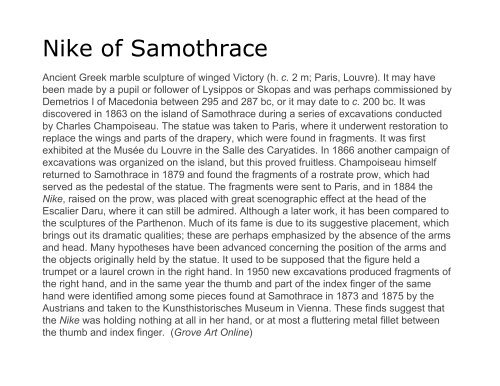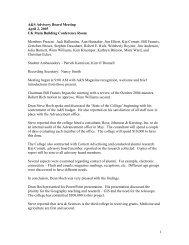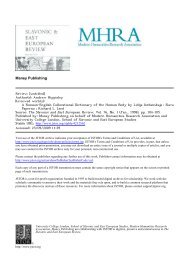Hellenistic Sculpture
Hellenistic Sculpture
Hellenistic Sculpture
You also want an ePaper? Increase the reach of your titles
YUMPU automatically turns print PDFs into web optimized ePapers that Google loves.
Nike of Samothrace<br />
Ancient Greek marble sculpture of winged Victory (h. c. 2 m; Paris, Louvre). It may have<br />
been made by a pupil or follower of Lysippos or Skopas and was perhaps commissioned by<br />
Demetrios I of Macedonia between 295 and 287 bc, or it may date to c. 200 bc. It was<br />
discovered in 1863 on the island of Samothrace during a series of excavations conducted<br />
by Charles Champoiseau. The statue was taken to Paris, where it underwent restoration to<br />
replace the wings and parts of the drapery, which were found in fragments. It was first<br />
exhibited at the Musée du Louvre in the Salle des Caryatides. In 1866 another campaign of<br />
excavations was organized on the island, but this proved fruitless. Champoiseau himself<br />
returned to Samothrace in 1879 and found the fragments of a rostrate prow, which had<br />
served as the pedestal of the statue. The fragments were sent to Paris, and in 1884 the<br />
Nike, raised on the prow, was placed with great scenographic effect at the head of the<br />
Escalier Daru, where it can still be admired. Although a later work, it has been compared to<br />
the sculptures of the Parthenon. Much of its fame is due to its suggestive placement, which<br />
brings out its dramatic qualities; these are perhaps emphasized by the absence of the arms<br />
and head. Many hypotheses have been advanced concerning the position of the arms and<br />
the objects originally held by the statue. It used to be supposed that the figure held a<br />
trumpet or a laurel crown in the right hand. In 1950 new excavations produced fragments of<br />
the right hand, and in the same year the thumb and part of the index finger of the same<br />
hand were identified among some pieces found at Samothrace in 1873 and 1875 by the<br />
Austrians and taken to the Kunsthistorisches Museum in Vienna. These finds suggest that<br />
the Nike was holding nothing at all in her hand, or at most a fluttering metal fillet between<br />
the thumb and index finger. (Grove Art Online)
















